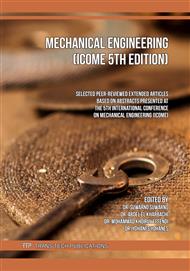p.39
p.49
p.61
p.67
p.75
p.81
p.89
p.95
p.101
Numerical Study Impact of Coal Optimization on the Erosion Rate of the Low Temperature Superheater (LTSH) Pipeline PLTU West Java 2 Palabuhan Ratu 3x350 MW
Abstract:
The emergence of power plants with the latest more sophisticated technology systems is a challenge for power companies in Indonesia. In this case, coal management must be carried out because fuel costs are currently the largest component in the Cost of Production, which reaches 70 percent. To achieve the target of the need for efficiency, the West Java 2 Palabuhan Ratu PLTU carried out a coal optimization initiative, namely replacing coal from 4400 kcal/kg to 4000 kcal/kg. Coal as the main fuel for the boiler has a dominant influence on the combustion characteristics and heat absorption in the boiler. The results of data analysis show a trend of erosion rate based on the distribution curve between overhaul periods. The predictions made resulted in the rate of depletion of the Boiler elbow tube. From the existing thickness data, the trend of the highest erosion rate occurs in the elbow of Low Temperature Superheater (LTSH) pipe area. This study aims to see the characteristics of the pipe erosion rate in the Elbow LTSH area with Coal Optimization. This study uses a numerical simulation method on CFD ANSYS FLUENT 19.1 software to determine the distribution of temperature, velocity, and ash particle data in the LTSH boiler area. The simulation output data analyzed is the erosion rate in the LTSH area. This erosion rate data will be further simulated to obtain the erosion rate in the elbow of LTSH A10 and E10 pipe areas. The results of the Coal Optimization simulation have a significant effect on changes in the value of the rate of depletion that occur in the Elbow A-10 pipe faster by 0.00133 mm/month. The depletion that occurs in the Elbow E-10 pipe is faster by 0.00122 mm/month.
Info:
Periodical:
Pages:
101-108
Citation:
Online since:
March 2023
Authors:
Price:
Сopyright:
© 2023 Trans Tech Publications Ltd. All Rights Reserved
Share:
Citation:



